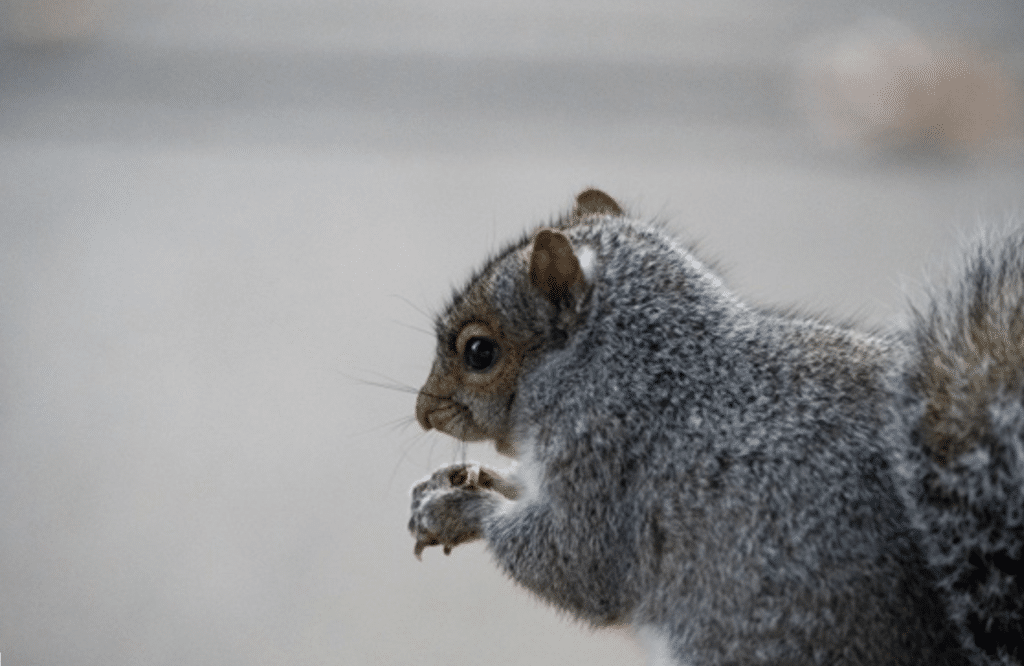Strange animal-nuclear tales
By Susan D’Agostino, Thomas Gaulkin, December 16, 2021
Have you ever wondered what nuclear technologies look like from the perspective of animals? In these short, strange-but-true stories and photographs, you’ll encounter animals whose paths intersected with nuclear infrastructure, including crocodiles drawn to the warm water surrounding nuclear power plants, chickens detonating nuclear landmines, and even lizards accused of being nuclear spies.

A is for ant
Ants in Poland—hundreds of thousands of them—trapped for years in an abandoned nuclear bunker ate their dead to survive.

B is for bear
A black bear outside of a US Air Force Base fence during the height of the Cuban Missile Crisis was mistaken for a Soviet saboteur, causing officials to consider starting a nuclear war.

B is for bee
Bees in the southeastern United States ingest radioactive isotopes from the first atomic bomb tests that shows up in their honey.

B is for bird
A bird over the US state of Maryland took down a US Navy “doomsday” aircraft designed to survive a nuclear attack.

B is for butterfly
Butterflies in Fukushima mutated after the 2011 nuclear disaster.

C is for chicken
Chickens—live ones—were part of a British plan to detonate nuclear landmines during World War II.

C is for cockroach
Cockroaches could likely survive a nuclear winter.

C is for crab
Crabs in the Russian Arctic archipelago invaded a nuclear waste graveyard—almost 14,000 crabs per hectare—in what researchers dubbed an “avalanche.”

C is for crocodile
Crocodiles in the US state of Florida have thrived in the waters outside of a nuclear power plant—so much that their status was down-listed from “endangered” to “threatened.”

E is for elephant
Elephants in East Africa absorb radioactive carbon from decades-old nuclear tests in their tusks, which offers clues to the age of ivory and could help fight illegal poaching.

J is for jellyfish
Jellyfish in Scotland clogged sea water-cooling intake pipes at a nuclear power plant, causing it to shut down.

L is for lizard
Lizards served as nuclear spies, at least according to an accusation made by Iran against Western nations.

M is for mosquito
Mosquitoes in Argentina that transmitted Zika were sterilized using nuclear technologies.

O is for owl
Owls, including the threatened Mexican spotted owl, nest on the grounds of Los Alamos National Laboratory, prompting the birthplace of the atomic bomb to modify its legacy waste clean-up activities.

P is for polar bear
Three polar bears in search of food in the Arctic leapt onto a Russian nuclear submarine.

S is for sheep
Sheep in Australia that were found to be radioactive helped bolster the country’s claim that Israel had tested nuclear weapons.

S is for snail
Snails—precisely four of them—were listed as potential collateral damage on a US Air Force Nuclear Weapons Center environmental impact report concerning the impact of intercontinental ballistic missile tests.

S is for snake
Snakes in Fukushima don dosimeters and help monitor radioactive fallout.

S is for squirrel
Squirrels in the US state of Montana tunneled under a nuclear missile base’s fences and set off intruder alarms.
T is for turtle
A turtle named “Bert” starred in the 1952 US civil defense cartoon film that taught school children how to “duck and cover” in the event of a nuclear explosion.
W is for whale
Blue whales in the Indian Ocean sing into nuclear-test-detection equipment.

W is for wolf
Wolves rule the Chernobyl Exclusion Zone, which has been described as a “post-nuclear Eden.”

Z is for zebra mussel
Zebra mussels—an invasive species in the Midwest—proliferate in the warm water around intake pipes of nuclear power plants.
Together, we make the world safer.
The Bulletin elevates expert voices above the noise. But as an independent nonprofit organization, our operations depend on the support of readers like you. Help us continue to deliver quality journalism that holds leaders accountable. Your support of our work at any level is important. In return, we promise our coverage will be understandable, influential, vigilant, solution-oriented, and fair-minded. Together we can make a difference.
Keywords: Crocodiles, animals, chickens, mosquitos, nuclear, nuclear energy, nuclear risk, nuclear weapons, owls, polar bears, sheep, snails, snakes, squirrel, whales, wolf, wolves
Topics: Nuclear Energy, Nuclear Risk, Nuclear Weapons, Special Topics
Share: [addthis tool="addthis_inline_share_toolbox"]



















We humans aren’t as far removed from nature as we like to think.
“Chickens—live ones—were part of a British plan to detonate nuclear landmines during World War II.”
Who had nuclear mines in WW2?